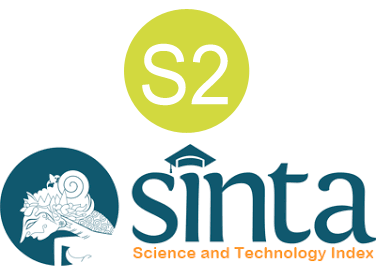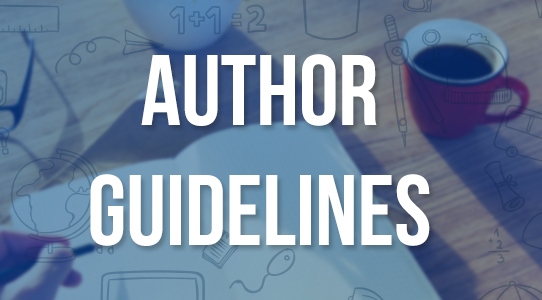The Effectiveness of Team-Based Learning Integrated with Canvas LMS in Enhancing Students’ Reading and Critical Thinking Skills
Keywords:
Canvas LMS, team-based learning, reading skills, critical thinking skills, critical reading courseAbstract
This research investigates the effectiveness of the implementation of Team-Based Learning (TBL) combined with technology, in this case is the Canvas Learning Management System (Canvas LMS), to improve reading skills and critical thinking skills among students from English as a Foreign Language (EFL) classrooms. Using a quasi-experimental design, the study involved 112 third-semester students in Critical Reading courses. The sample was determined through cluster random sampling, which consisted of a C class that consisted of 28 students of the English Department in the State Islamic Institution of Ponorogo. Pre-test and post-test were administered, and data were analyzed using a paired sample t-test. The findings showed a significant enhancement in reading skills due to the integration of Canvas LMS into TBL (sig = 0.000 < 0.005), as evidenced by the increased scores on the mean scores of pre-test and post-test from 62.57 to 80.61. Students also showed an increase in their critical thinking skills. The implications of these findings provide further insights into the effectiveness of integrating TBL with the use of technology to improve academic reading and critical thinking in EFL settings and a suggested strategy for developing such essential skills in university contexts.
References
Adeoye, M. A. (2023). Review of sampling techniques for education. ASEAN Journal for Science Education, 2(2), 87–94.
Al Khoeri, A. F., Nuraini, W., Ramdani, R., & Agum, S. (2021). The implementation of Canvas to enhance English teaching and learning. International Conference on Education of Suryakancana (IConnects Proceedings).
Al-Ataby, A. (2021). Hybrid learning using Canvas LMS. European Journal of Education and Pedagogy, 2(6), 27–33. https://doi.org/10.24018/ejedu.2021.2.6.180
AlZaabi, A. (2023). How did we remotely deliver team-based learning (TBL) to overcome the digital divide and inequality of internet access? International Journal of Emerging Technologies in Learning (iJET), 18(17), 113–125. https://doi.org/10.3991/ijet.v18i17.35633
Bjorn, G. (2024). The CERIC method plus social collaborative annotation improves critical reading of the primary literature in an interdisciplinary graduate course. Frontiers in Education, 9, 1257747. https://doi.org/10.3389/feduc.2024.1257747
Boltsi, A., Kalovrektis, K., Xenakis, A., Chatzimisios, P., & Chaikalis, C. (2024). Digital tools, technologies, and learning methodologies for education 4.0 frameworks: A STEM oriented survey. IEEE Access, 12, 12883–12901. https://doi.org/10.1109/ACCESS.2024.3355282
Bozkurt, A., Karadeniz, A., Baneres, D., Guerrero-Roldán, A. E., & Rodríguez, M. E. (2021). Artificial intelligence and reflections from the educational landscape: A review of AI studies in half a century. Sustainability, 13(2), 800. https://doi.org/10.3390/su13020800
Brannan, L. R., Parrish, C. W., & Szatkowski, H. D. (2019). Team-based learning: An instructional approach to facilitate critical thinking in teacher preparation. In G. J. Mariano & F. J. Figliano (Eds.), Advances in Higher Education and Professional Development (pp. 80–105). IGI Global. https://doi.org/10.4018/978-1-5225-7823-9.ch005
Brookhart, S. M. (2013). How to create and use rubrics for formative assessment and grading. ASDC. https://books.google.com/books?hl=id&lr=&id=v_9QBAAAQBAJ&oi=fnd&pg=PP1&dq=How+to+Create+and+Use+Rubrics+for+Formative+Assessment+and+Grading.&ots=xA7akeD1pq&sig=Ul7sxtBJXxUT9Ak9lEhN8XS_rIM
Burgess, A., & Matar, E. (2020). Team-based learning (TBL): Theory, planning, practice, and implementation. In D. Nestel, G. Reedy, L. McKenna, & S. Gough (Eds.), Clinical Education for the Health Professions (pp. 1–29). Springer Singapore. https://doi.org/10.1007/978-981-13-6106-7_128-1
Burrack, F., & Thompson, D. (2021). Canvas (LMS) is a means for effective student learning assessment across an institution of higher education. Journal of Assessment in Higher Education, 2(1), 1–19. https://doi.org/ttps://doi.org/10.32473/jahe.v2i1.125129
Creswell, J. W. (2023). Research design: Qualitative, quantitative, and mixed methods approaches (6th ed.). Sage Publications. http://www.kspjournals.org/index.php/JSAS/article/view/1313
Dnyanesh, S., Shirahatti, A., Bhimalli, S. M., Yadav, S. K., & Dnyanesh, K. (2024). Team-based learning (TBL) in medical education: Fostering collaboration and enhancing learning outcomes. Medical Journal of Dr. D.Y. Patil Vidyapeeth, 17(5), 1036–1042. https://doi.org/10.4103/mjdrdypu.mjdrdypu_908_23
Efthymiou, I.-P., & Sidiropoulos, S. (2024). Team-based learning: Enhancing student engagement and learning outcomes. In Cases on Economics Education and Tools for Educators (pp. 1–24). IGI Global. https://www.igi-global.com/chapter/team-based-learning/333835
Espey, M. (2018). Enhancing critical thinking using team-based learning. Higher Education Research & Development, 37(1), 15–29. https://doi.org/10.1080/07294360.2017.1344196
Facione, P. A. (2015). Critical thinking: What it is and why it counts (Vol. 1). Measured Reasons LLC. https://www.academia.edu/download/71022740/what_why98.pdf
Fadhli, R., Suharyadi, A., Firdaus, F. M., & Bustari, M. (2023). Developing a digital learning environment team-based project to support online learning in Indonesia. International Journal of Evaluation and Research in Education (IJERE), 12(3), 1599. https://doi.org/10.11591/ijere.v12i3.24040
Fakoya, A., Ndrio, M., & McCarthy, K. J. (2023). Facilitating active collaborative learning in medical education: A literature review of the peer instruction method. Advances in Medical Education and Practice, Volume 14, 1087–1099. https://doi.org/10.2147/AMEP.S421400
Goh, S. H., Gangi, P. M. D., & Gunnells, K. (2020). Applying team-based learning in an online introductory information systems course. Journal of Information Systems Education, 3(1). http://jise.org/Volume31/n1/JISEv31n1p1.html
Hughes, E. S., Bradford, J., & Likens, C. (2018). A case study: facilitating collaboration, communication, and critical thinking skills in physical therapy education through technology-enhanced instruction. TechTrends, 62(3), 296–302. https://doi.org/10.1007/s11528-018-0259-8
Khatser, G., & Khatser, M. (2022). Online learning through LMSs: Comparative assessment of Canvas and Moodle. International Journal of Emerging Technologies in Learning (iJET), 17(12), 184–200. https://doi.org/10.3991/ijet.v17i12.30999
Koh, J. H. L., & Kan, R. Y. P. (2021). Students’ use of learning management systems and desired e-learning experiences: Are they ready for next-generation digital learning environments? Higher Education Research & Development, 40(5), 995–1010. https://doi.org/10.1080/07294360.2020.1799949
Kusumawardani, S. S., Wulandari, D., Arifin, S., Santoso, B. J., & Cahyono, E. (2024). Buku panduan merdeka belajar—Kampus merdeka 2024 (2nd ed.). Direktorat Jenderal Pendidikan Tinggi, Riset, dan Teknologi.
Liu, Y., Thurston, A., & Ye, X. (2024). Technology-enhanced cooperative language learning: A systematic review. International Journal of Educational Research, 124, 102314. https://doi.org/10.1016/j.ijer.2024.102314
Marachi, R., & Quill, L. (2020). The case of Canvas: Longitudinal datafication through learning management systems. Teaching in Higher Education, 25(4), 418–434. https://doi.org/10.1080/13562517.2020.1739641
Meirbekov, A., Maslova, I., & Gallyamova, Z. (2022). Digital education tools for critical thinking development. Thinking Skills and Creativity, 44, 101023. https://doi.org/10.1016/j.tsc.2022.101023
Michaelsen, L. K., Sweet, M., & Parmelee, D. X. (2011). Team-based learning: Small group learning’s next big step: New directions for teaching and learning. John Wiley & Sons. http://eduq.info/xmlui/handle/11515/18171
Mpungose, C. B., & Khoza, S. B. (2022). Postgraduate students’ experiences using Moodle and Canvas learning management system. Technology, Knowledge and Learning, 27(1), 1–16. https://doi.org/10.1007/s10758-020-09475-1
Müller, C., & Mildenberger, T. (2021). Facilitating flexible learning by replacing classroom time with an online learning environment: A systematic review of blended learning in higher education. Educational Research Review, 34, 100394. https://doi.org/10.1016/j.edurev.2021.100394
Nalbandyan, N. (2023). Strategies for developing critical reading at the university stage. SUSh Scientific Proceedings, 209–217. https://doi.org/10.54151/27382559-23.1pb-209
Nalyvaiko, O., & Vakulenko, A. (2021). Canvas LMS: Opportunities and features. Educological Discourse, 35(4), 154–172. https://doi.org/10.28925/2312-5829.2021.410
Nikitina, A., Karlova, N., Kravchenko, M., Lapko, O., Barylova, H., & Kotienieva, J. (2024). The role of multimedia resources in developing critical comprehension of texts in teaching language and literature in higher education institutions. Forum for Linguistic Studies, 6(4), 71–81. https://doi.org/10.30564/fls.v6i4.6668
Oudat, Q., & Othman, M. (2024). Embracing digital learning: Benefits and challenges of using Canvas in education. Journal of Nursing Education and Practice, 14(10), 39. https://doi.org/10.5430/jnep.v14n10p39
Pek, J. H., Chia, W. J. D., Kaliannan, S., Wong, Y. T., & Chan, K. P. (2020). Teaching ultrasound-guided femoral nerve block in the emergency department. Medical Ultrasonography, 1(1), 97. https://doi.org/10.11152/mu-2112
Pinto, M., & Leite, C. (2020). Digital technologies supporting students' learning in higher education: Literature review. Digital Education Review, 37, 343–360. https://doi.org/10.1344/der.2020.37.343-360
Pusmendik. (2024). Berita PISA di Indonesia. Perilisan Hasil PISA 2022: Peringkat Indonesia Naik 5-6 Posisi. https://pisa2025.id/berita/read/pisa-di-indonesia/4/perilisan-hasil-pisa-2022-peringkat-indonesia-naik-5-6-posisi/
Santiana, S., Silvani, D., & Ruslan, R. (2021). Optimizing LMS Canvas for interactive online learning perceived by the students. Journal of English Education and Teaching, 5(4), 529–543. https://doi.org/10.33369/jeet.5.4.529-543
Silberman, D., Carpenter, R., Takemoto, J. K., & Coyne, L. (2021). The impact of team-based learning on the critical thinking skills of pharmacy students. Currents in Pharmacy Teaching and Learning, 13(2), 116–121.
Stockemer, D. (2019). Quantitative methods for the social sciences: A practical introduction with examples in SPSS and Stata. Springer International Publishing. https://doi.org/10.1007/978-3-319-99118-4
Sugiyono, S. (2018). Metode penelitian pendidikan pendekatan kualitatif, kuantitatif dan R & D. Alfabeta, Bandung, 4.
Sweet, M., & Michaelsen, L. K. (2023). Team-based learning in the social sciences and humanities: Group work that works to generate critical thinking and engagement. Taylor & Francis.
Xie, Z.-B., Cheng, X.-Y., Li, X.-Y., & Zhang, Y.-F. (2025). Team-based learning pedagogy enhances the education quality: A systematic review and meta-analysis. BMC Medical Education, 25(1), 580. https://doi.org/10.1186/s12909-025-07175-x
Downloads
Published
How to Cite
Issue
Section
License
Copyright (c) 2025 Nurul Khasanah, Rudi Hartono, Puji Astuti, Sri Wahyuni

This work is licensed under a Creative Commons Attribution-ShareAlike 4.0 International License.
Authors who submit manuscript retain its copyright and grant publisher right of first publication licensed under a Creative Commons Attribution-ShareAlike 4.0 International License (CC BY-SA 4.0) that allows others to access (search, read, download, and cite), share (copy and redistribute the material in any medium or format) and adapt (remix, transform, and build upon any material) the work for any lawful purpose, even commercially with an acknowledgement of the work's authorship and initial publication in Qalamuna: Jurnal Pendidikan, Sosial, dan Agama.











